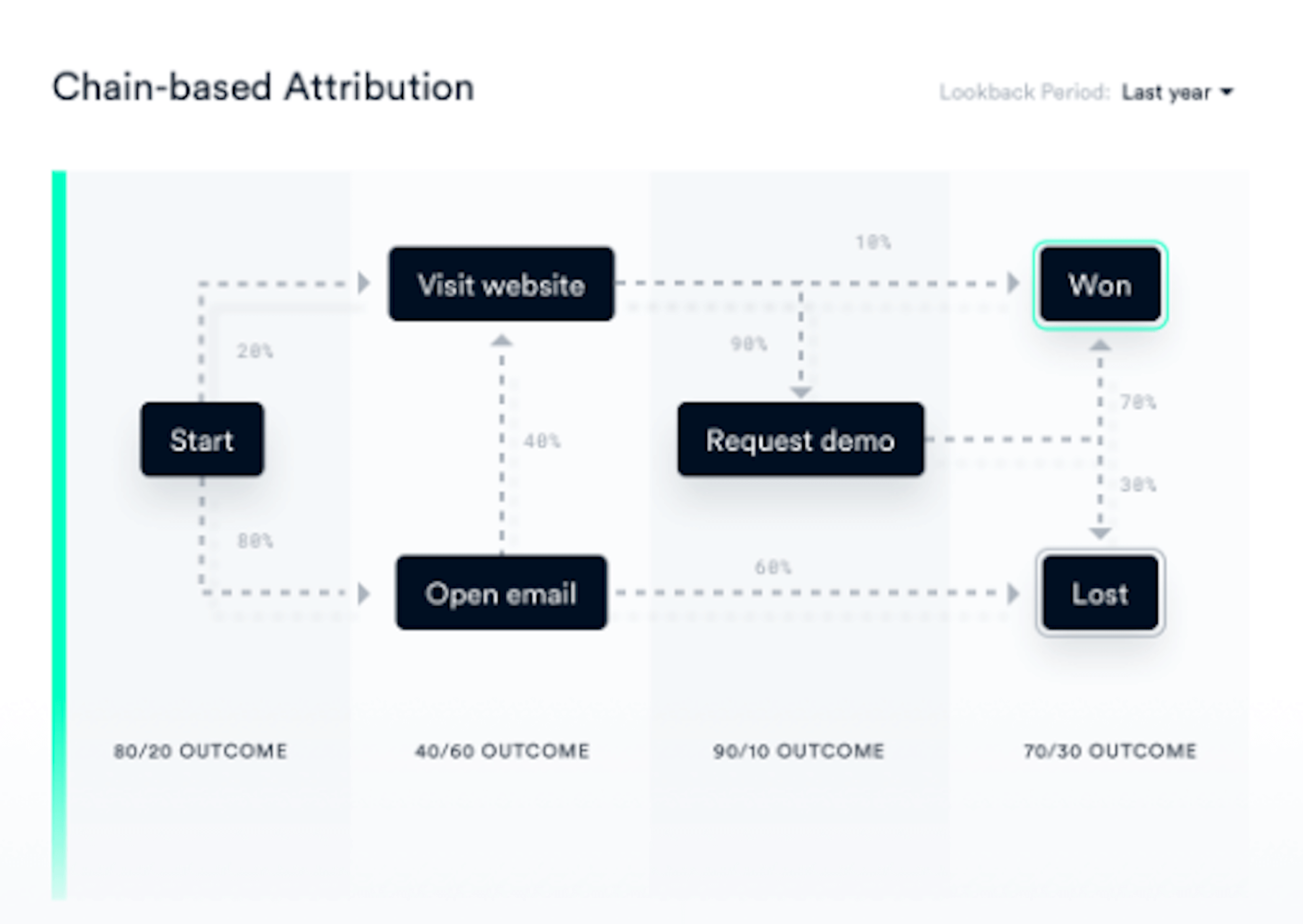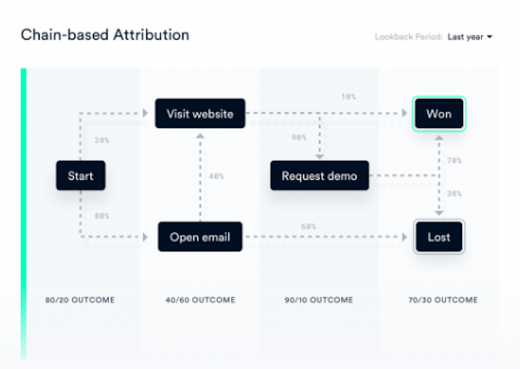Could machine learning solve attribution challenges?
This new attribution methodology uses machine learning, gives marketers visibility into full-funnel marketing.

Source: CaliberMind B2B Customer Data Platform
If your digital marketing team struggles with attribution, you’re not alone. Nielsen reports that only one out of every four marketers can confidently attribute revenue to their digital efforts. But does that surprise you?
Probably not — attribution is a pressing issue and can be a serious challenge for marketing and sales teams. Activating cross-channel campaigns through different platforms leads to siloed data in various, disconnected systems. The continued growth of your martech stack could create significant challenges, including attribution accuracy. But despite these challenges, your team still needs to be able to confidently track ROI and communicate value to your organizational leaders.
The attribution issue
Many marketers feel the frustration on a day-to-day basis, and attribution disparities often expose larger organizational challenges. If marketers can’t demonstrate to their leadership the ROI behind their digital marketing, how can they ask furthered martech investments?
Single-touch is likely the most-used model, where attribution is credited to the final touchpoint that converts. Multi-touch attribution models, on the other hand, use a methodology that assigns different weighted values based on how likely marketers believe each touchpoint influences the conversion throughout the whole customer journey.
“Determining your attribution model and where to assign the weight is the largest challenge we face as marketers,” said Natasha Humphrey, strategic digital marketing consultant at SmartSearch Marketing. “Undervaluing one source in the attribution model, however, could present a challenge when we need leadership buy-in on continued investment in that source.”
Part of that challenge, according to Raviv Turner, chief executive officer of CaliberMind, is the standard attribution methodologies most marketers use today. “Many organizations have shifted from single-touch attribution to multi-touch attribution models, but that creates complex challenges without good, clean data sets. We need to start using chain-based models going forward,” he said.
The practice of assigning weight to channels across customer journeys relies heavily on human bias — the channels that we believe heavily drive conversions are assigned the most weight. “But what if instead of bringing human bias to the table, we go back to the lead and reverse-engineer the customer journey?” Turner asked.
That’s where machine learning comes in.
Machine learning and chain-based attribution
The rise of advancements in AI, machine learning and natural processing has become much more tangible to marketers over the past five years, but many still face difficulty understanding how to apply them to our marketing. “With a machine learning model, we’re able to remove the human bias,” said Chris Nixon, vice president of marketing at CaliberMind. “The model learns with your data to look at different outcomes — revenue, pipeline, lead generation, etc. — and identifies the touch points across the customer journey.”
“The machine learning model analyzes buying patterns over time and identifies the patterns that influence a chain of events,” Nixon added. “If you’re looking at revenue from ‘closed/won or closed/lost’ opportunities, what was the path for each?” The chain-based model starts with the outcome and looks back at the steps across the journey taken to drive the end result.
Create marketing intelligence for leadership
Automation and machine learning both have a strong presence in the martech landscape, but CaliberMind’s chain-based attribution tool takes a different approach. The tool connects siloed platforms, tracks ROI by starting with the outcome, and works backward to understand the holistic impact of each step of the customer journey. This method could improve the quality of marketing intelligence and insights we gain. Marketers should feel equipped with accurate knowledge of their digital performance to have well-informed discussions with decision-makers.
According to Humphrey, adopting this methodology could be a large step forward for marketers. “The chain-based approach could make a big difference to marketers who need leadership buy-in for continued investment in undervalued sources,” said Humphrey. “We need the insight to provide ROI to leadership and clients, and into how the full-funnel is attributing to the journey. Chain-based attribution could very well do that.”
Marketing Land – Internet Marketing News, Strategies & Tips
(38)



